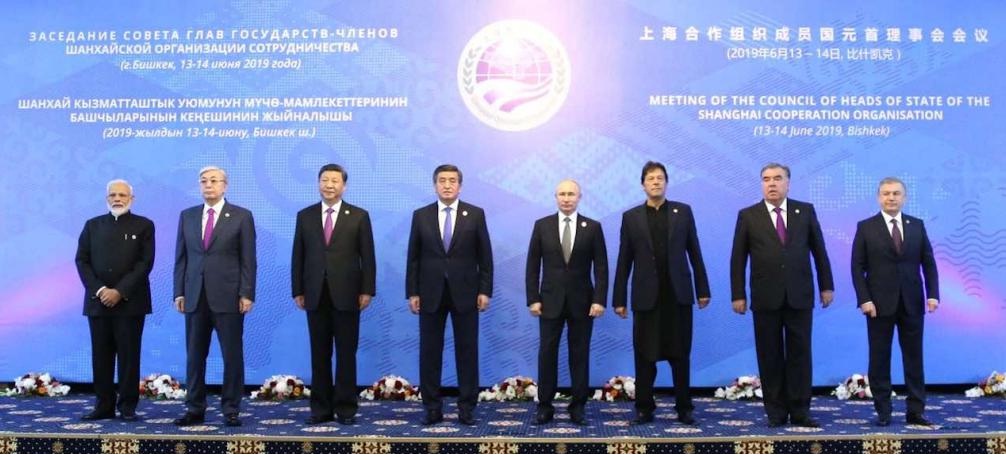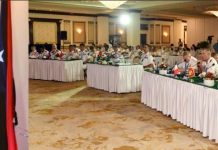By Lieutenant Colonel Khalid TaimurAkram (Retd),
Shanghai Cooperation Organization is a regional group comprising of eight official members including; China, Russia, Kazakhstan, Kyrgyzstan, Tajikistan, Uzbekistan, India, and Pakistan; four observer states; Afghanistan, Belarus, Iran, and Mongolia; and multiple dialogue partners including Azerbaijan, Armenia, Cambodia, Nepal, Turkey, and Sri Lanka.
SCO has continued to play a prominent role as a forum for security cooperation, with an objective to combat three evils that have maligned the regional environment i.e. extremism, separatism, and terrorism. However, since 18 years of its creation, SCO’s scope and bureaucracy have expanded, thereby making it a multifaceted and multi-lateral institution.
The primary aim of the organization nevertheless remains to build mutual trust and foster multidimensional cooperation among its members, which is defined in SCO’s charter as: “strengthening mutual trust, good neighborliness and friendship among member states; developing effective co-operation in political affairs, economy, trade, science and technology, culture, education, energy, transport and environmental protection; and working together to maintain regional peace, security and stability”.
Since the existence of SCO, many significant developments have taken place. The major evolution is the expansion and dynamism in the field of economy, energy, culture science and technology.
SCO provides a favorable environment for economic investments and inter-connectivity projects, to enhance trade and commerce activities, attain free flow of goods and capitals. There are various factors behind this evolutionary development of the organization, such as the changing regional security and geo-political dynamics, emergence of new potential players in the region, increased globalization, economic orientation of global powers, China’s economic progression through BRI and willingness of countries to welcome business and investments to their homelands.
Regional integration has emerged as a fundamental trend in the development of global order, incorporating more flexible models of cooperation, collective approach to address common challenges and deepening economic ties. SCO serves as a remarkable example of this new model of regional partnership, as it has tremendous potential and the increased enthusiasm of its members to search for new opportunities stimulates its further development.
Interestingly, SCO members are so diverse and their political systems, economies, geography, degrees of influence and internal dynamics are so different, yet they have absolute equality regardless of their position in international system.
Thus, SCO is a practical example of coexistence and a powerful transnational structure. SCO also has a large scale economic agenda, for which a Business Council was established to create a capacity for investment in regional projects. The Business Council of SCO is actively functional and directed to gear up a cross-regional business framework by supporting various start-up and humanitarian projects.
Numerous constructive projects have been planned to promote economic prosperity and increased connectivity in the region such as the transport infrastructure projects, construction of highways and railways, building oil and gas pipelines across Central Asia.
SCO aims to form a common market and a free-trade zone in the region so as to increase trade and commerce opportunities for regional states. The key elements required to successfully implement economic projects in a region are; a huge market, a substantial component of the mineral resources, strong industrial base and consumer/purchasing power.
Fortunately, all the SCO member states possess these prerequisites. The legal framework of the Shanghai Cooperation Organization includes more than 100 documents on economic cooperation, encompassing all areas of trade, banking activities, manufacturing, financial and investment projects, agriculture, transport and infrastructure, telecommunications, and tourism.
The member states of SCO are against trade protectionism and actively support the strengthening of a transparent multilateral trading scheme. Chinese President Xi Jingping has proposed to create Shanghai Cooperation Organization free trade zone in the region.
All the members are motivated to work in accordance with the principle of mutual benefit to improve regional economic cooperation and deepen the Belt and Road project. This will further enhance the cooperation in business sector, investment, finance, connectivity and trade.
It will also foster new opportunities for integrated development to the entire region, ultimately adding more impetus to global growth. The economic potential of SCO has further boosted by the inclusion of Pakistan and India, being two major countries with enormous bulk of mineral resources and huge markets.
The organization has contributed a lot in the areas of economy and trade. In the year 2018, the total trade volume among the member states reached 255 billion US dollars, a year-on-year increase of 17.2 percent. Moreover, in the year April 2019, China’s total investment in SCO member states exceeded 87 billion U.S. dollars. Several large-scale energy-related, mineral and industrial manufacturing projects have made headway. According to the IMF report, in the next five years (up to the year 2023), the economic potential in the SCO region will surpass that of the G7 economies.
SCO has made considerable economic achievements since its creation in 2001. The meetings of different officials concerned with foreign economic and trade activities have been regularly held, resulting in a number of developments.
In the year 2003, the SCO Council of Heads of Government in China – Beijing, initiated a program of multilateral trade and economic cooperation. Many joint working committees were also created to address the issues of electronic commerce, customs, technical conformity assessment procedures, investment promotion, expansion of transit potential, development of telecommunication technologies and energy complex.
In the year 2004,the organization adopted an Action Plan for the implementation of this Program that comprised of 10 areas of cooperation, including trade and investment, customs, the application of regulations, standards and procedures conformity assessment, financial and tax spheres, transport, the energy sector, agriculture, science and high technologies, information and telecommunication technologies, and in the field of environmental protection. Then in year 2005, another milestone was achieved within the framework of the SCO that is, an agreement on the preparation for pilot projects in the field of hydro-power,developmentof transport routes, establishing fiber-optic communications, and cooperation in scientific and technical sectors.In the year, 2010 Russia proposed the implementation of the SCO’s Multilateral Trade and Economic Cooperation Program. The Shanghai Cooperation Organization Energy Club was also created in 2010, comprising of not only the member states, but also the observer countries.
The 2014, Agreement on International Road Transportation Facilitation is also a big achievement, creating a feasible procedures for the transportation of goods across the five transcontinental green corridors, stretching from the Chinese port city of Lianyungang. Analyzing the potential of SCO member countries, it can be concluded that the most bright areas of cooperation under the auspices of SCO include; the development of energy and natural resources, the construction of infrastructure and communication system to increase connectivity, collective projects in communications, science and technologies.
These initiatives and mutual collaboration will provide a strong synergistic effect for the entire SCO economy and for the cooperation of its members as a whole. In real economic terms, the Shanghai Cooperation Organization accounts for almost one-fourth of the global GDP, and average GDP within the SCO has rose by 4.84% in the year 2016. The member countries of SCO are steadily improving their foreign exchange reserves that now constitute of about 4 trillion US Dollars.
Approximately 11% of global direct foreign investment in 2016 took place in the Shanghai Eight. The organization is also actively developing the tourism industry. The SCO Tourism Cooperation Development Programme was adopted in June 2016 at the SCO Summit in Tashkent. The SCO member states have great tourism potential. Pakistan, for example, is a country with a rich historical and cultural heritage. This provides opening up a new range of opportunities for tourism cooperation in the SCO states. The SCO members display enthusiasm for participation. Many other players are also attracted due to the financial resources that Russia and China bring to the region. Moreover, now that China is investing in the Central Asia, it has attracted Western investors who were reluctant to invest in these countries. SCO’s approach and framework is not military or security oriented, but diplomatic. SCO has created a powerful image of a regional organization as it has the capacity to develop into a strong player in the region that has huge economic potential.
The wirter is the Executive Director, Center for Global & Strategic Studies (CGSS), Islamabad


















